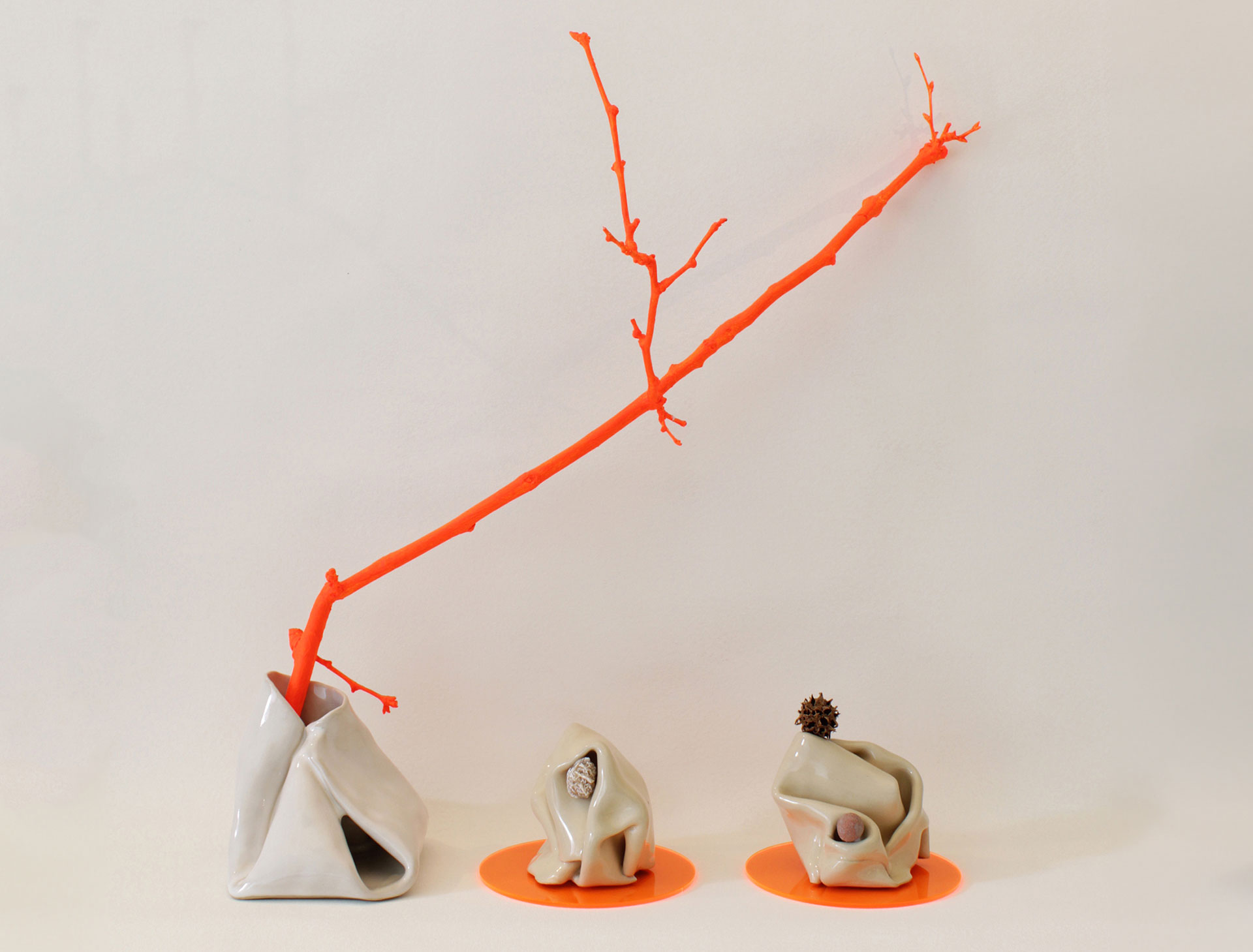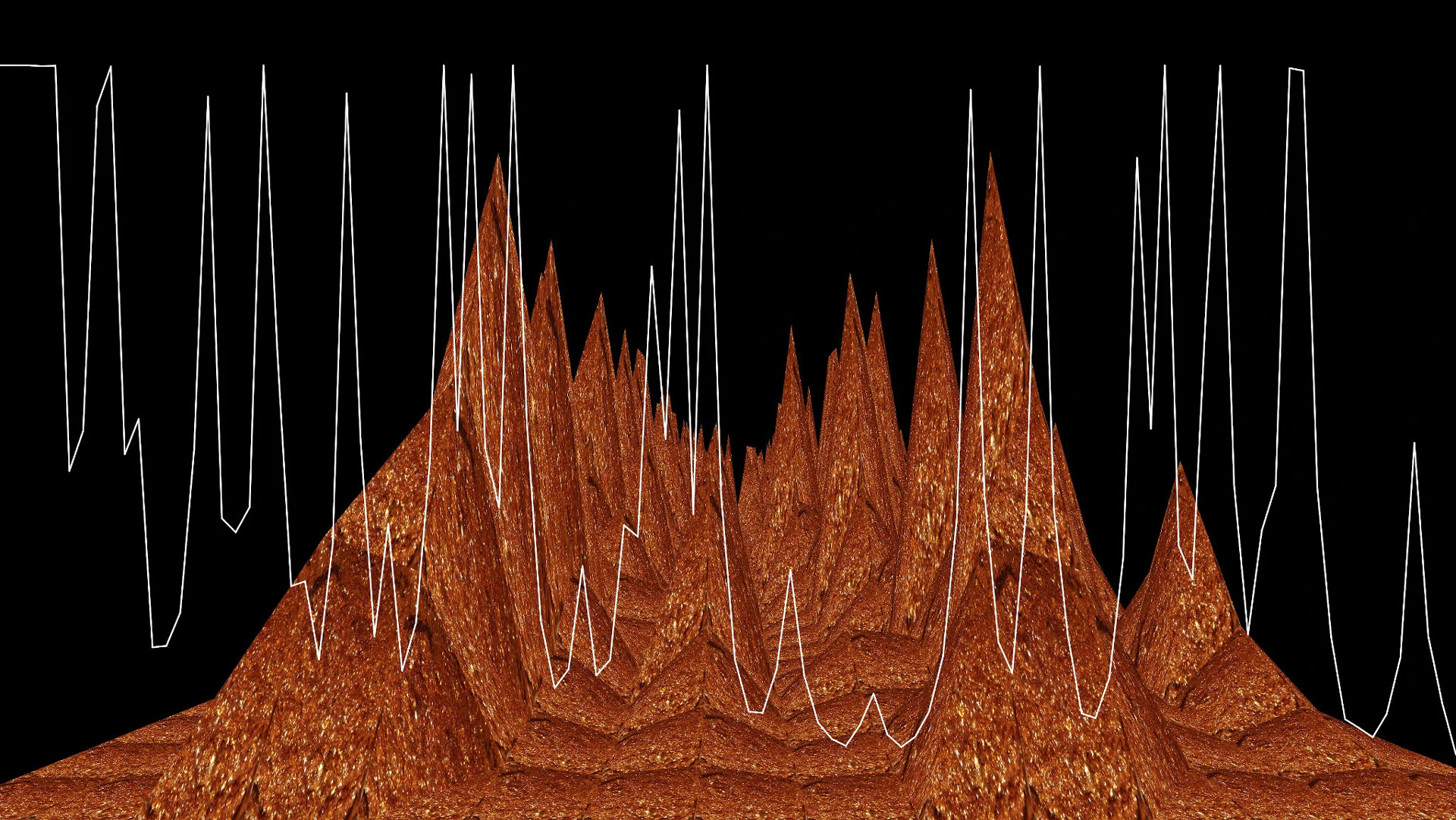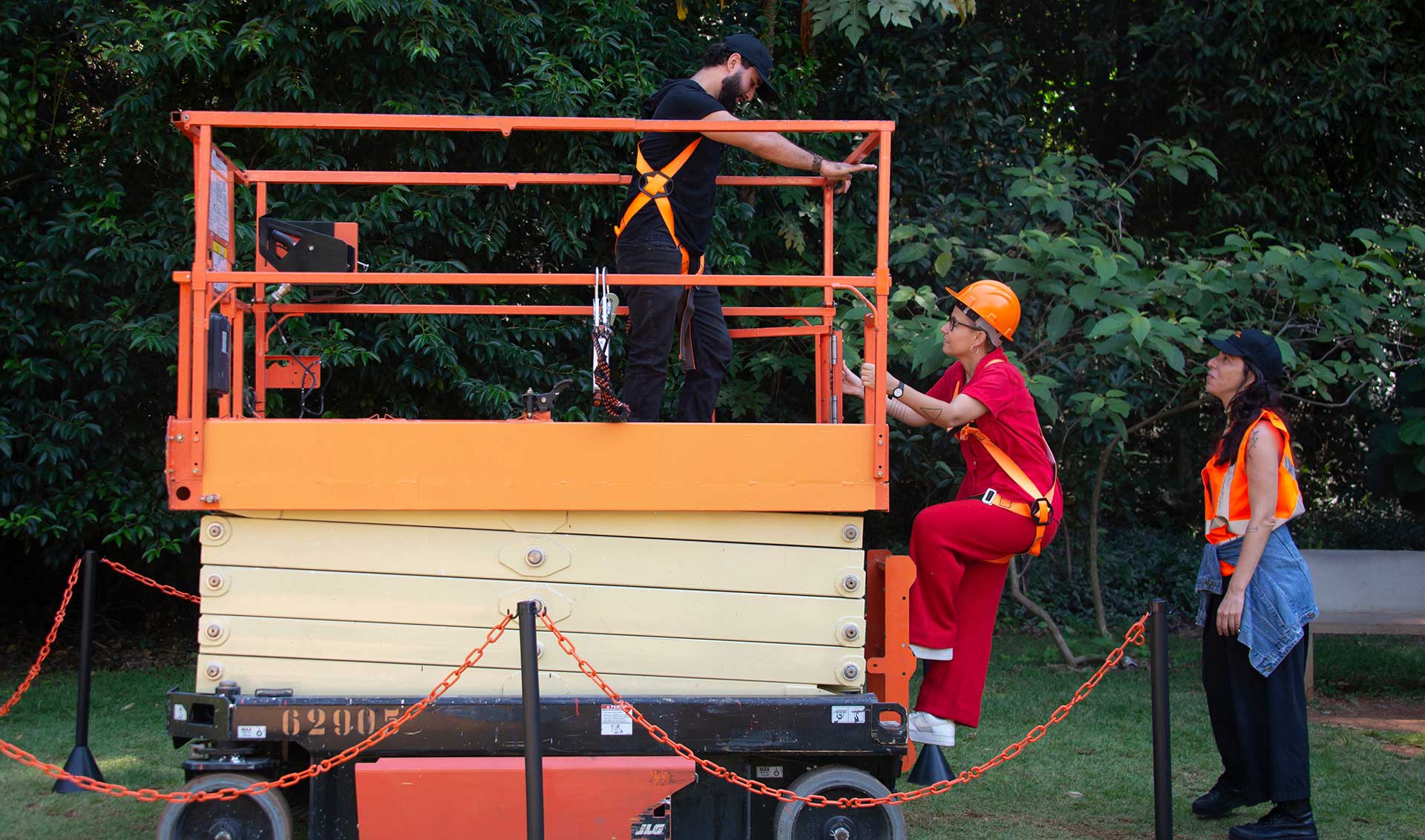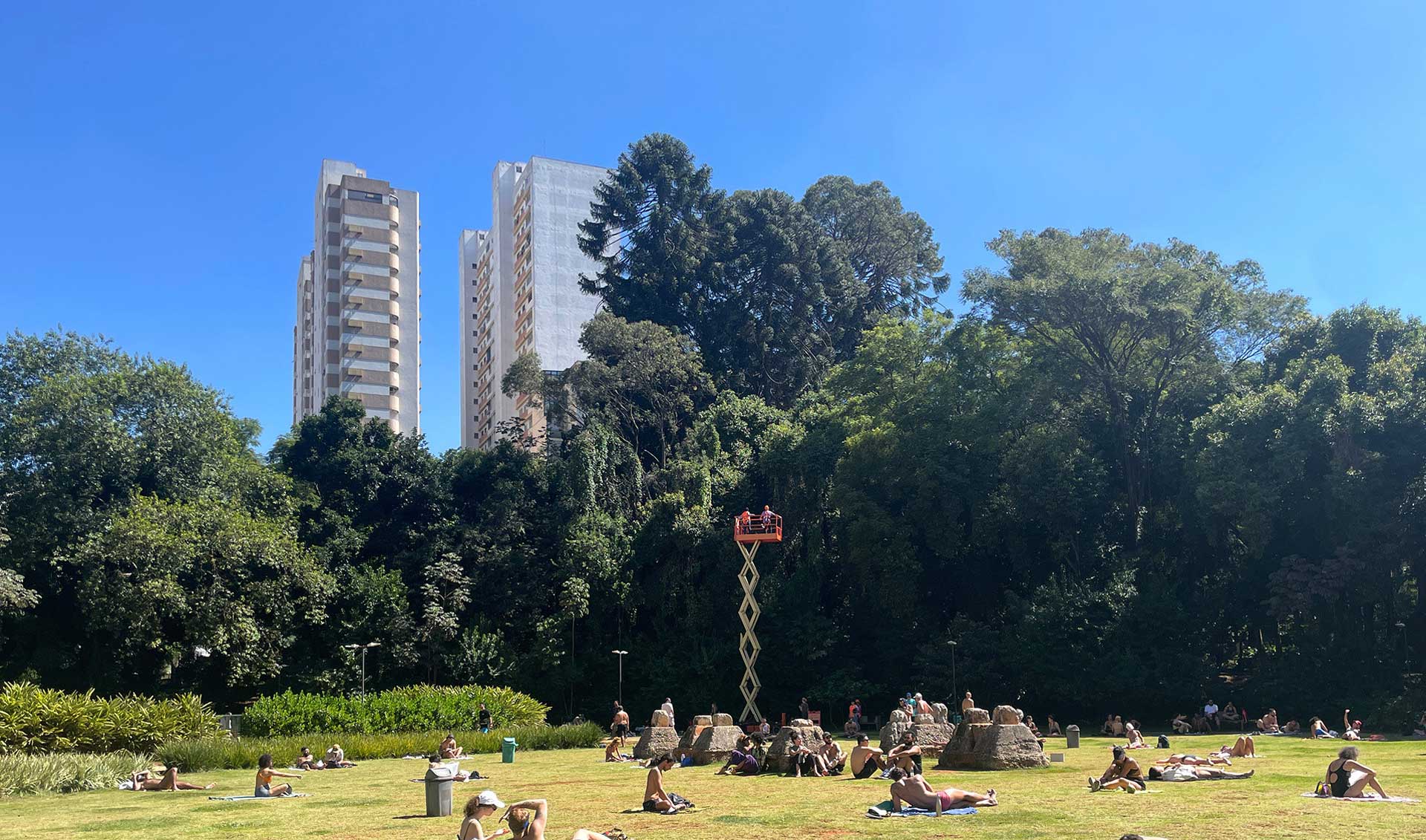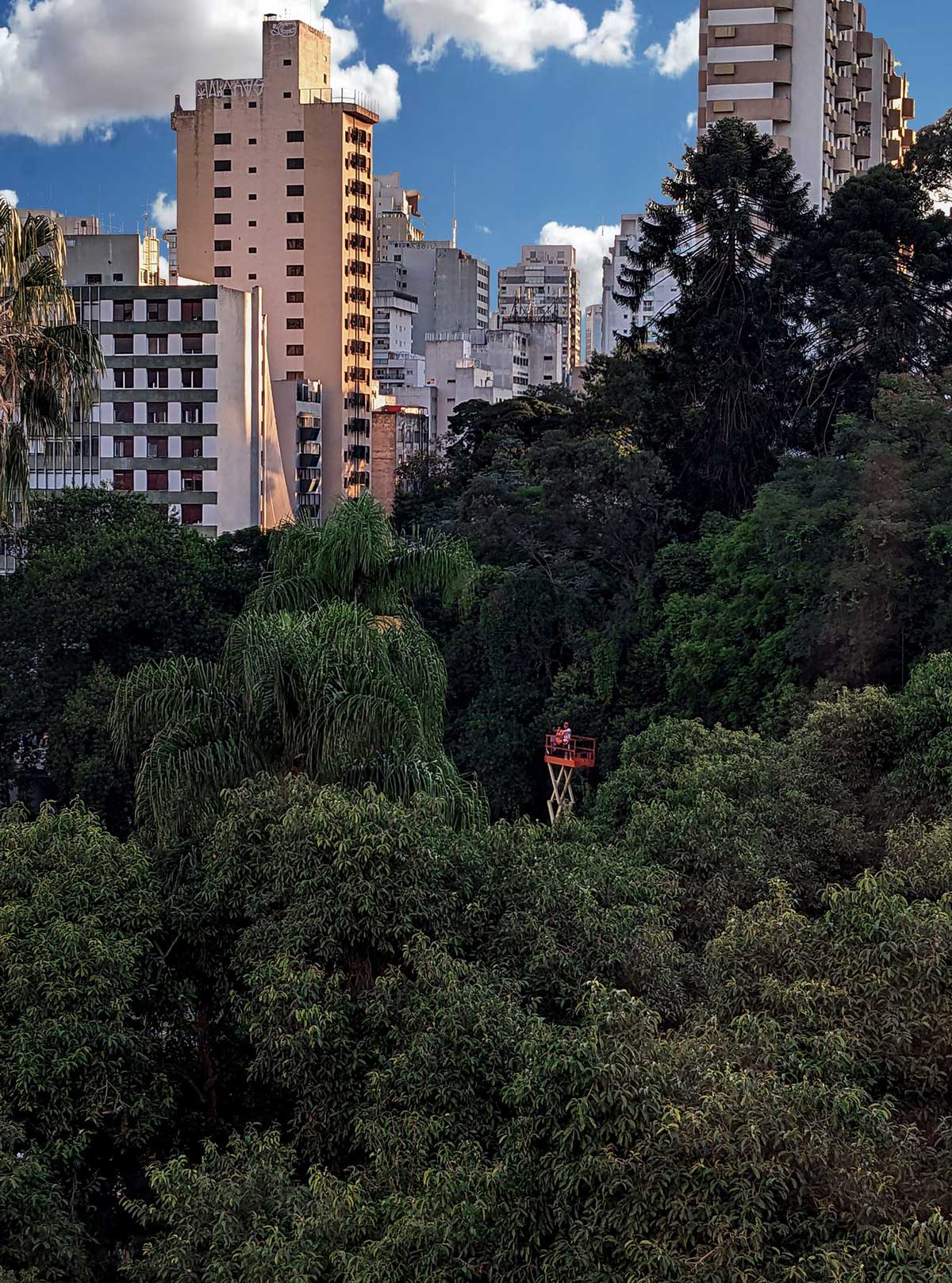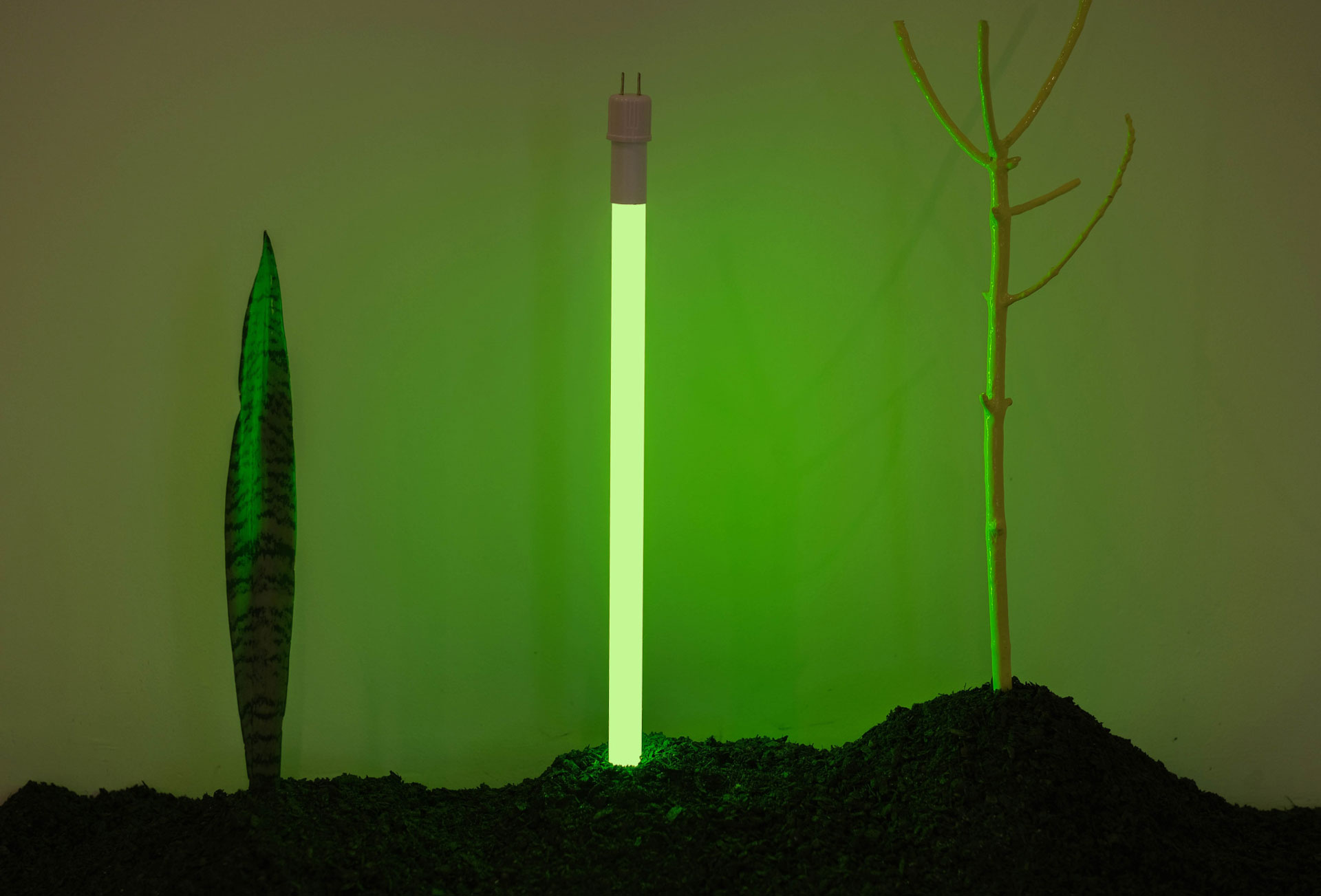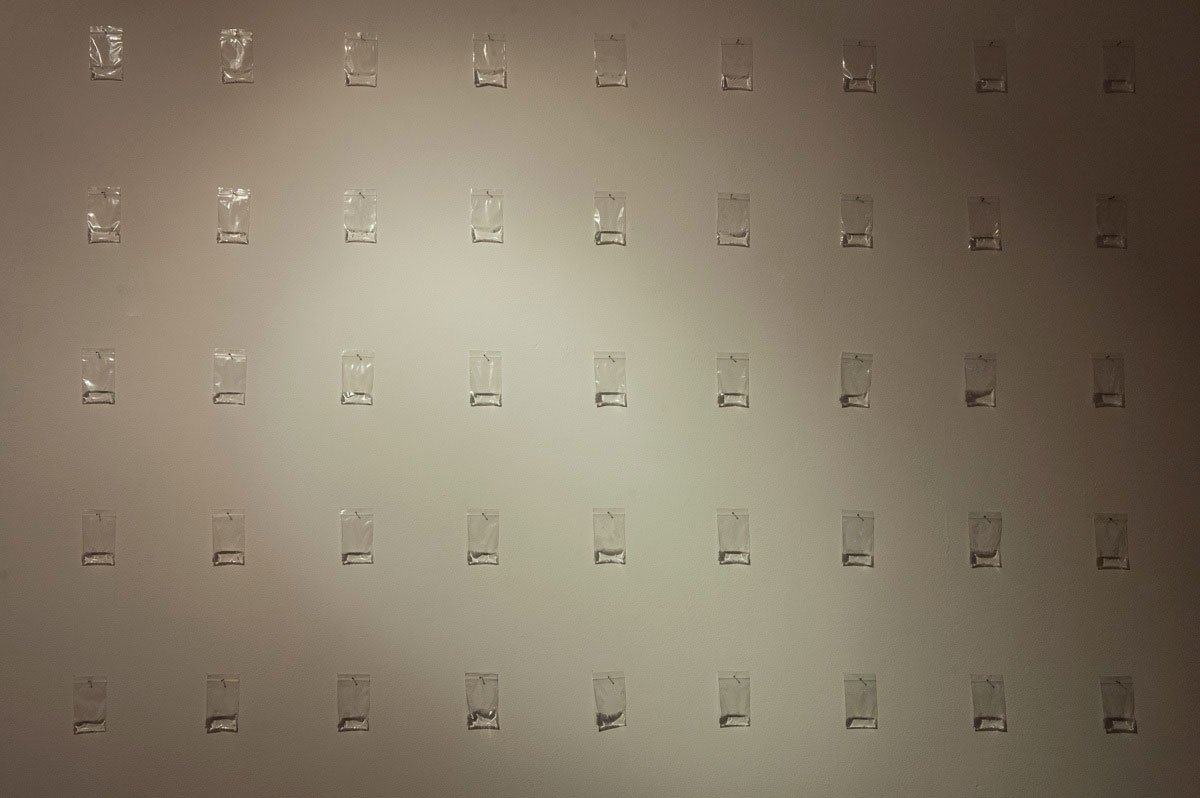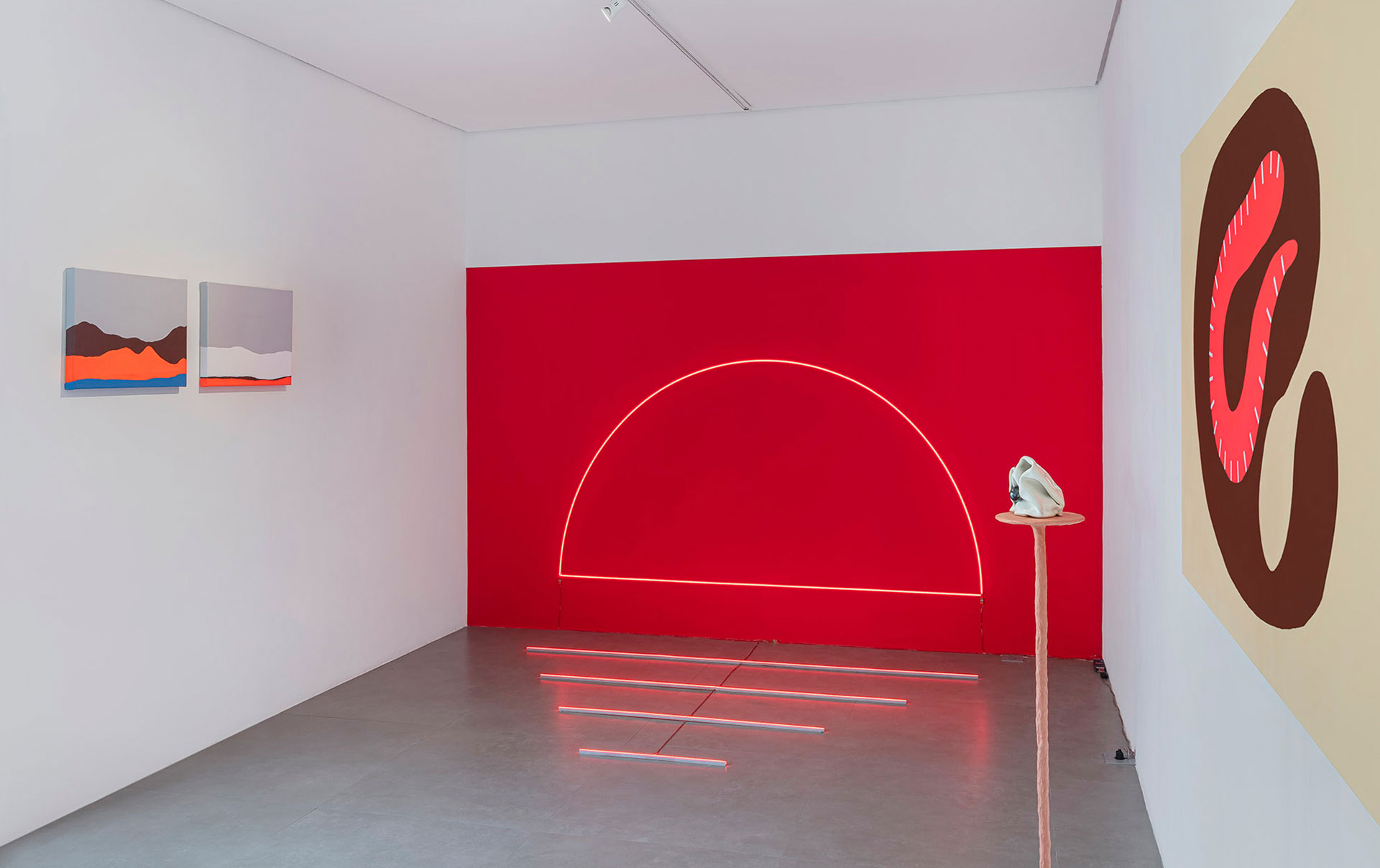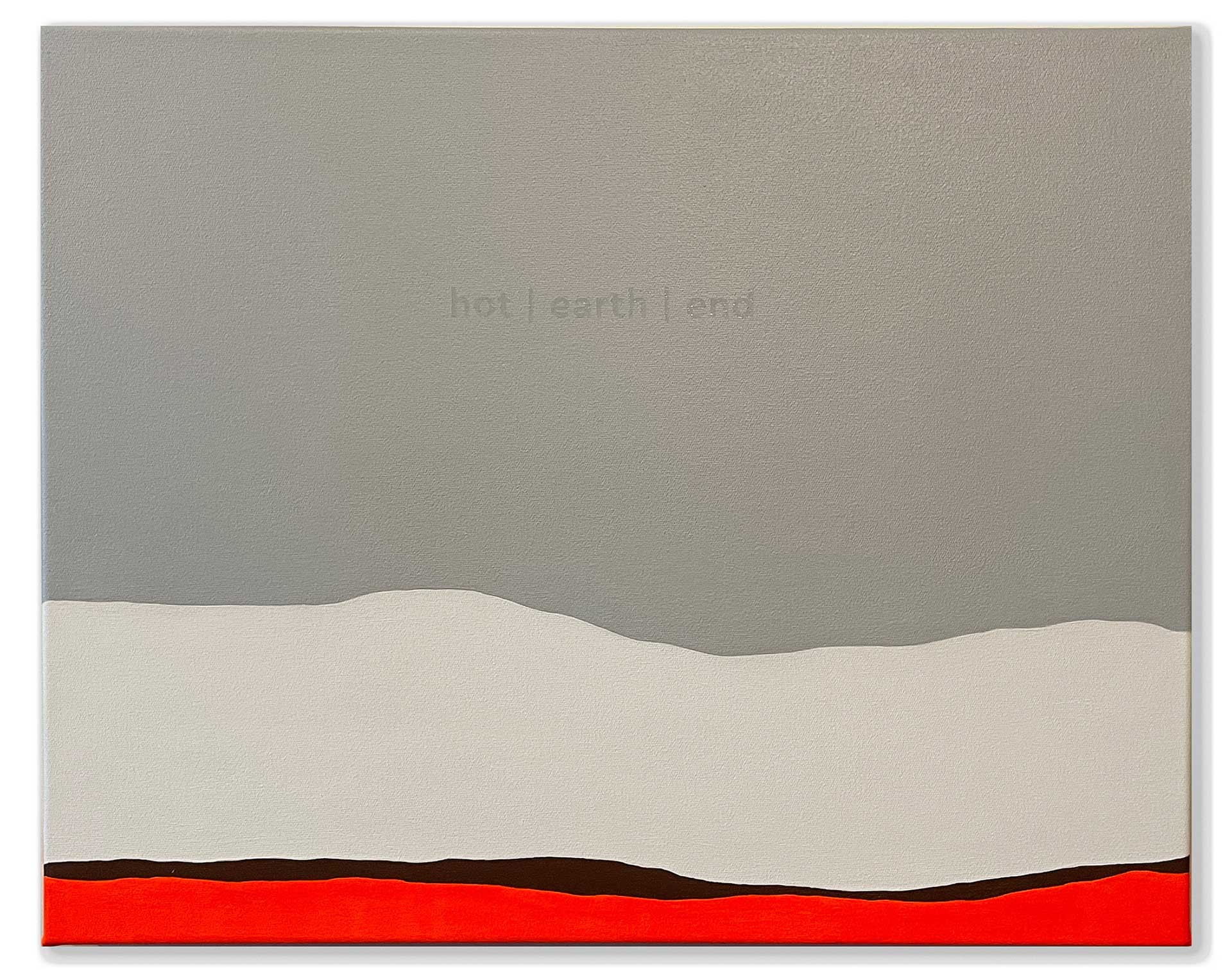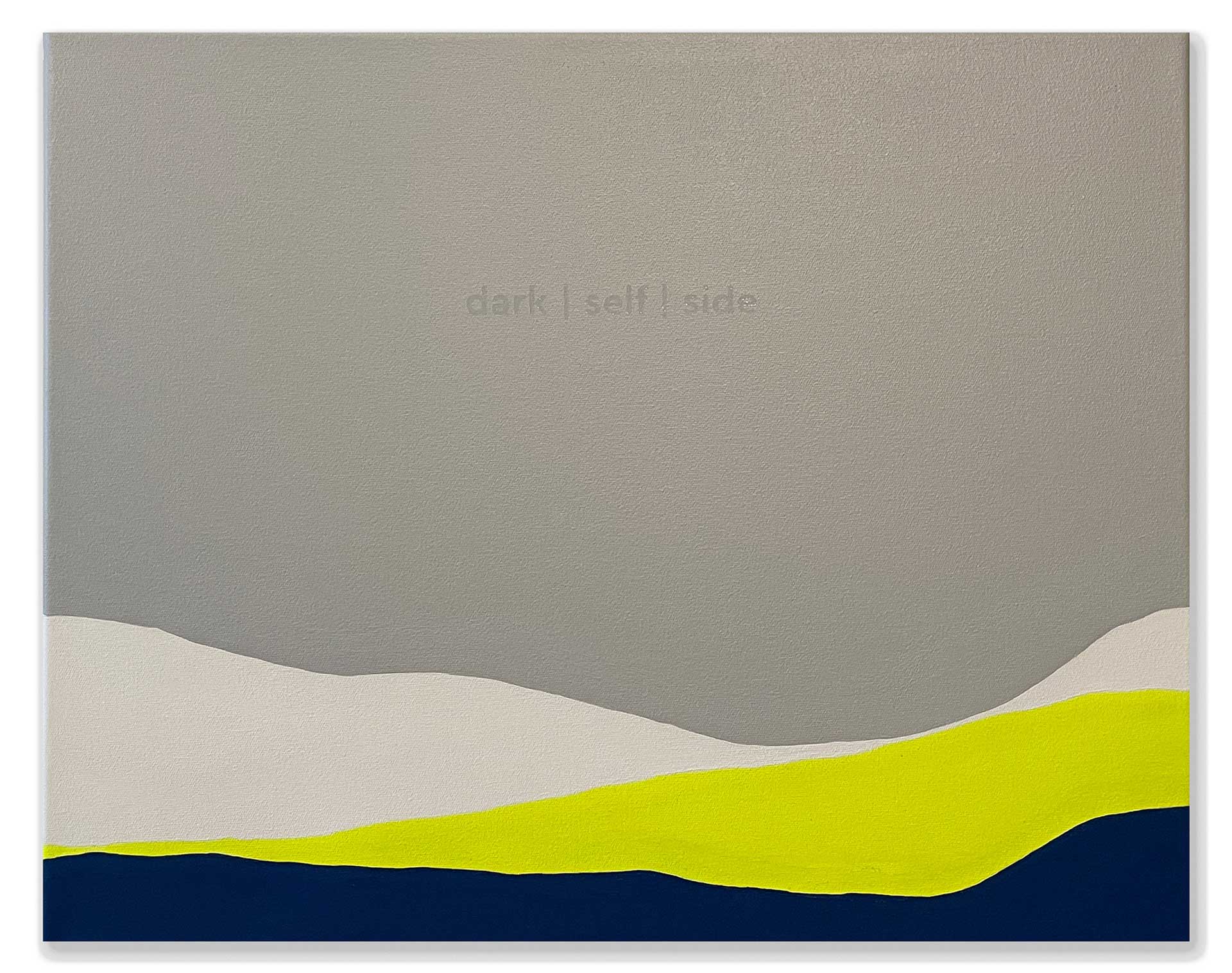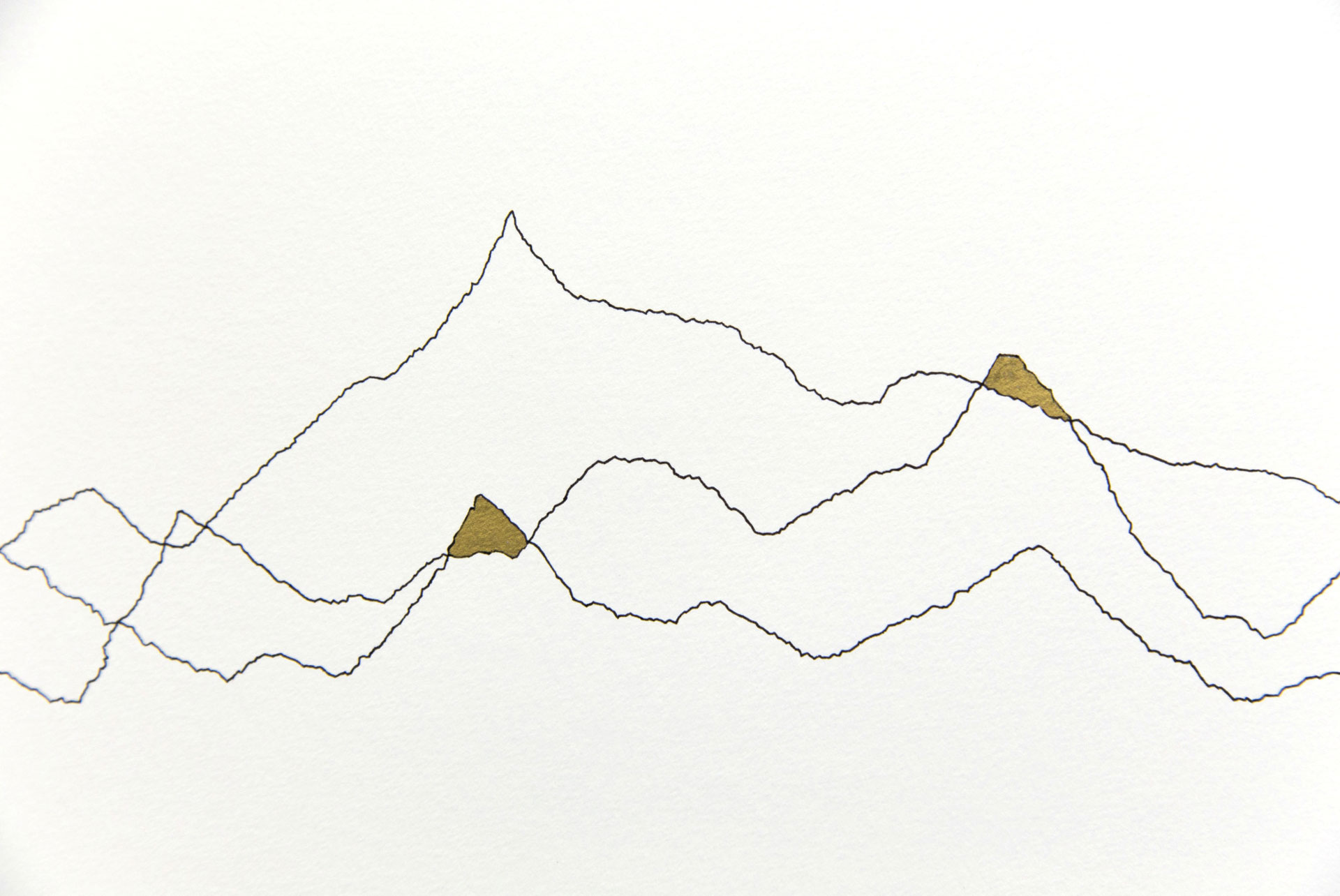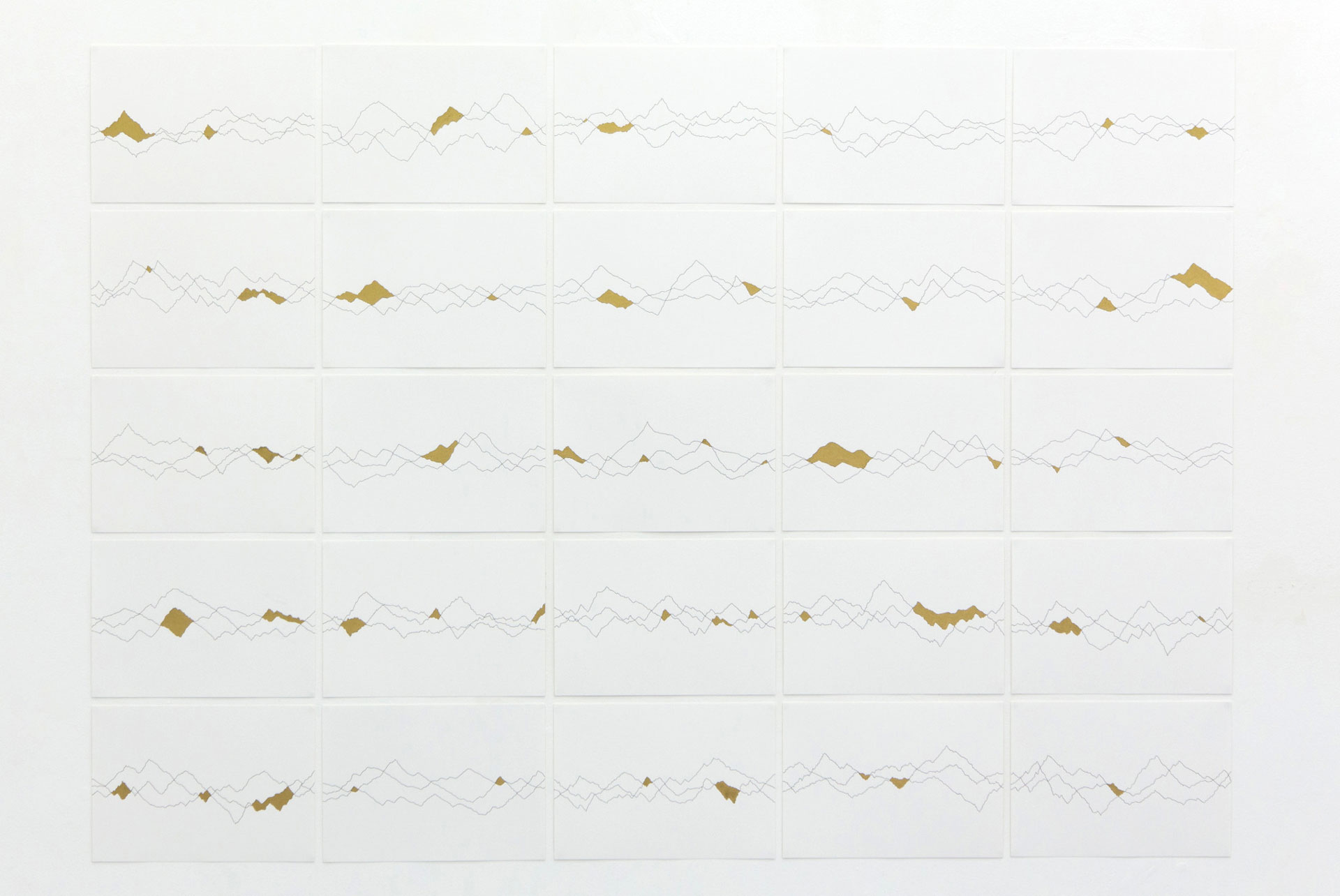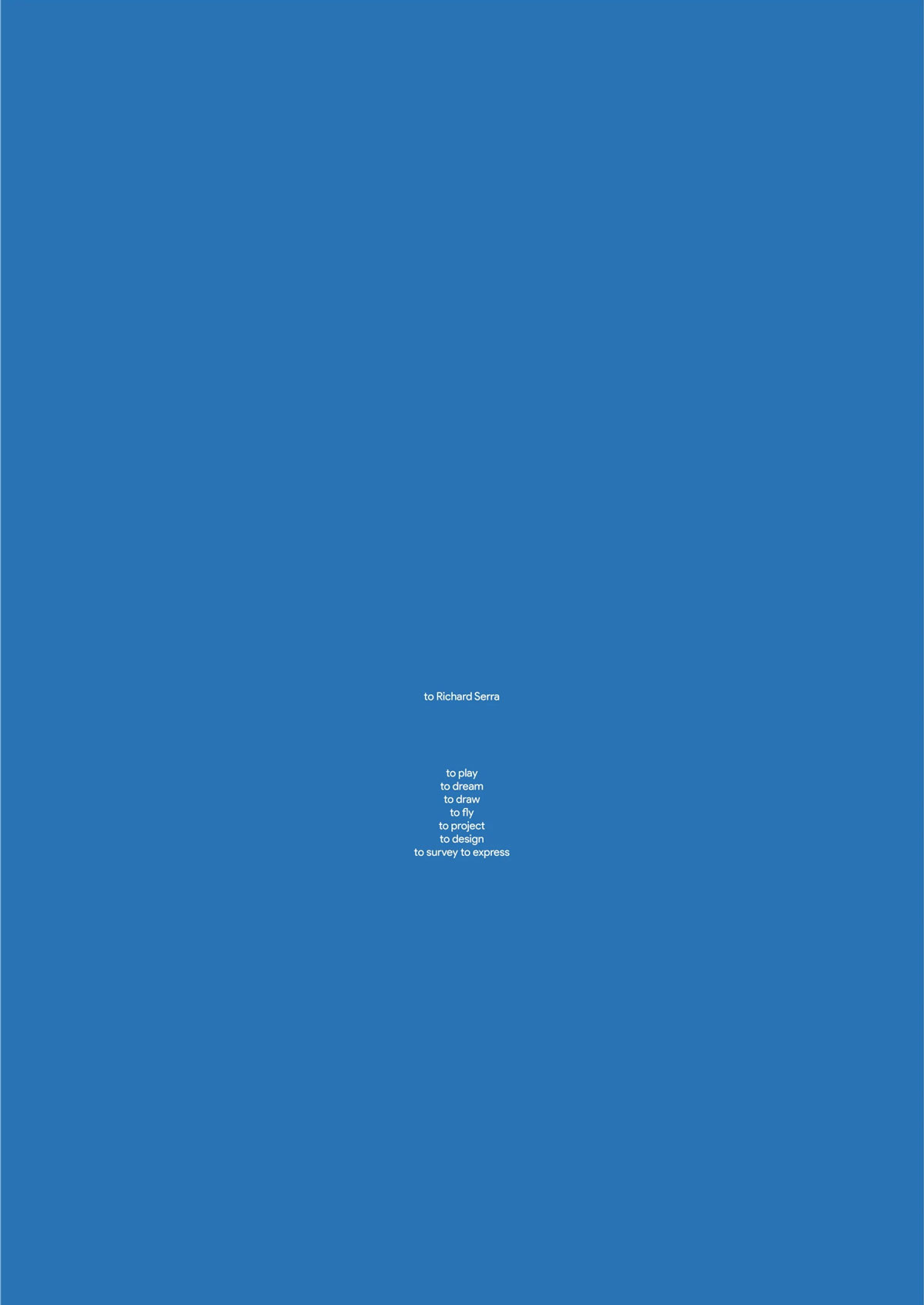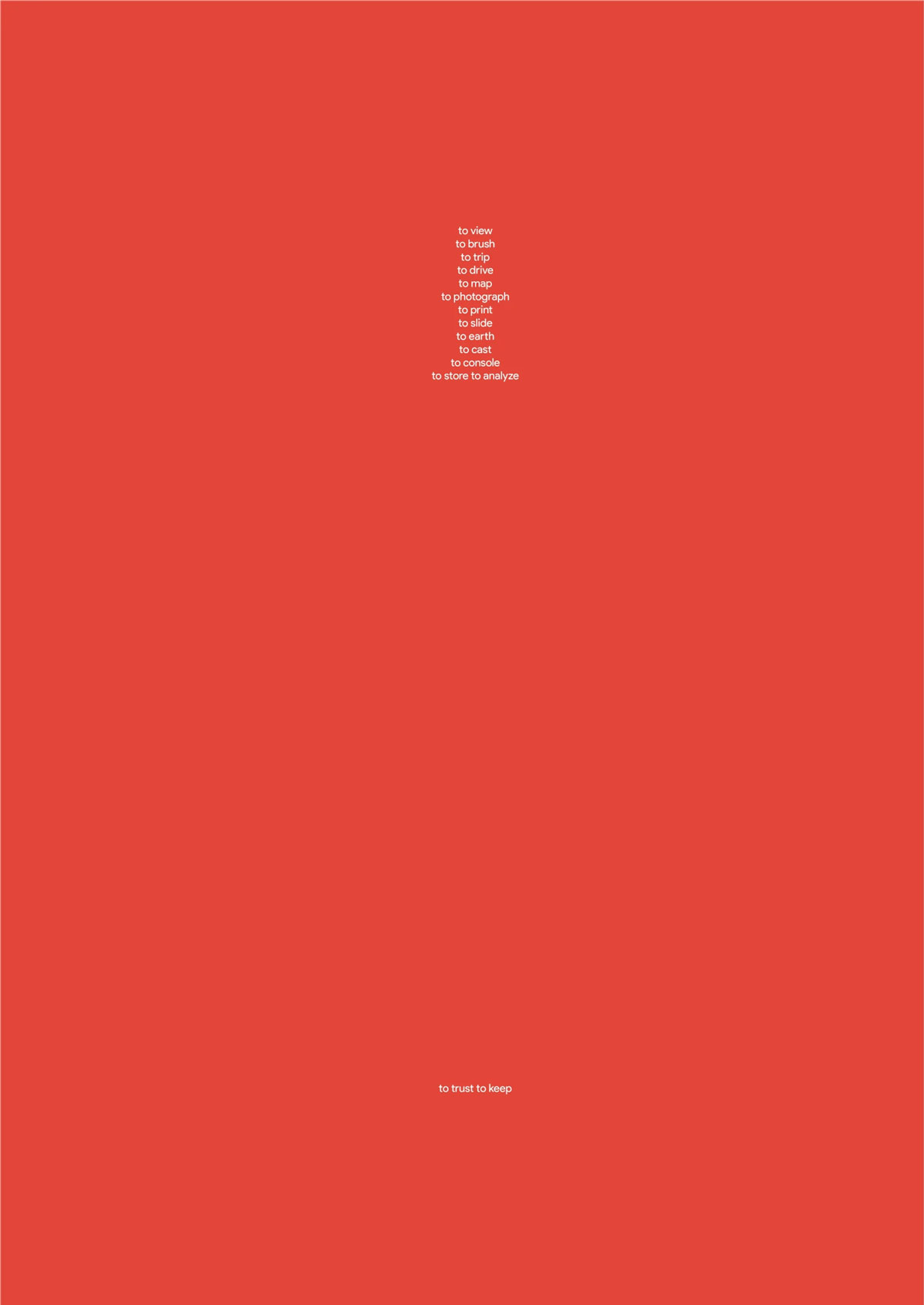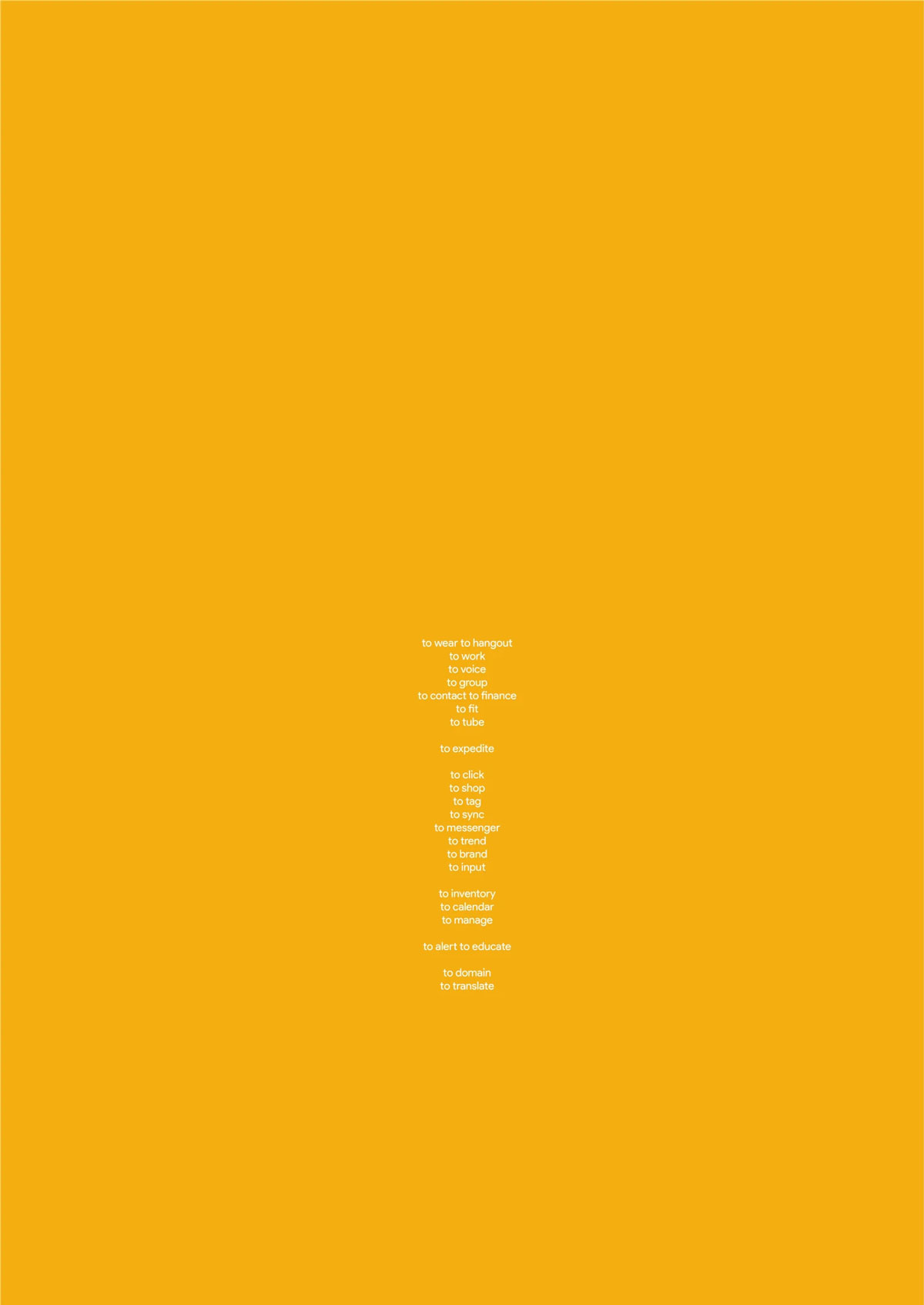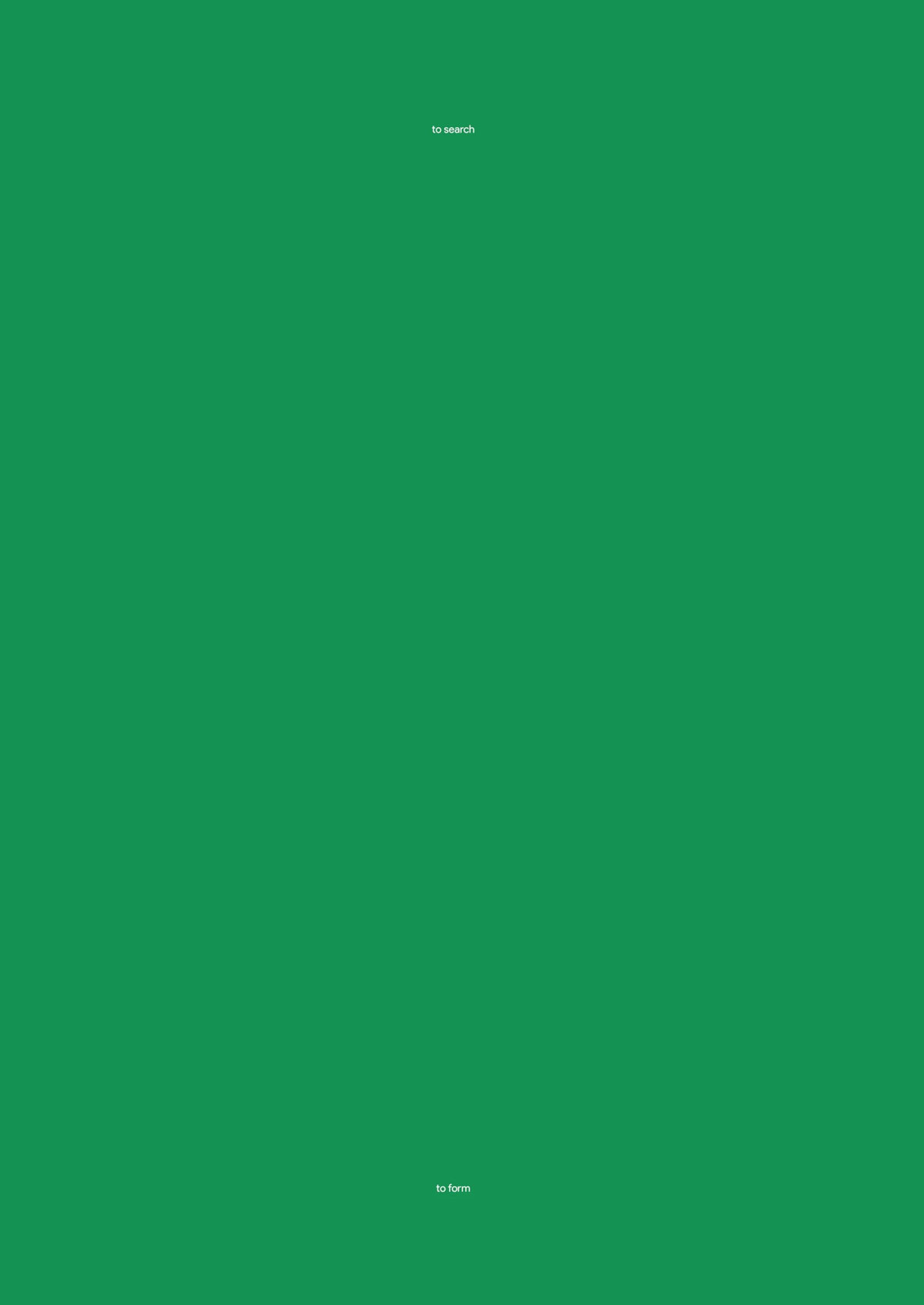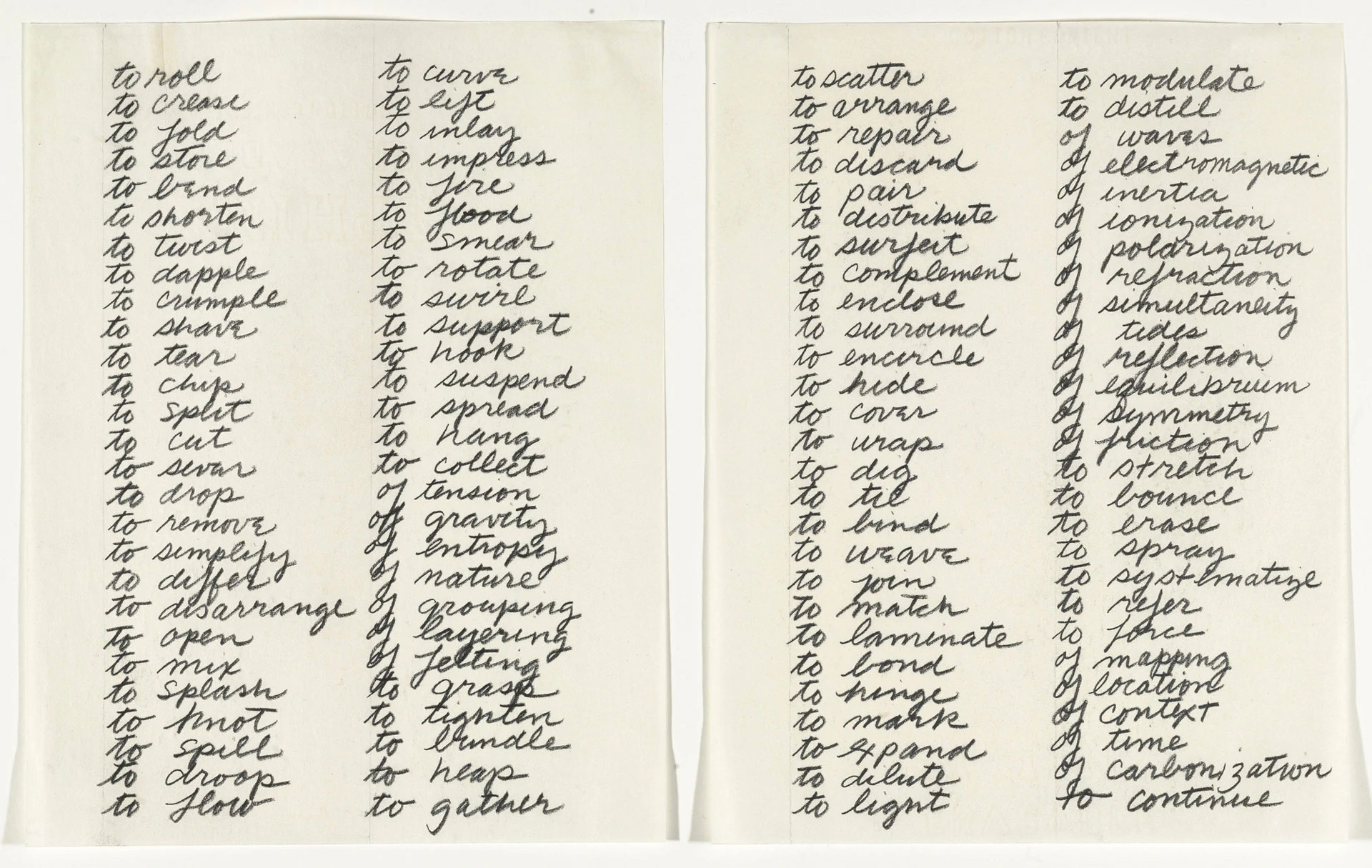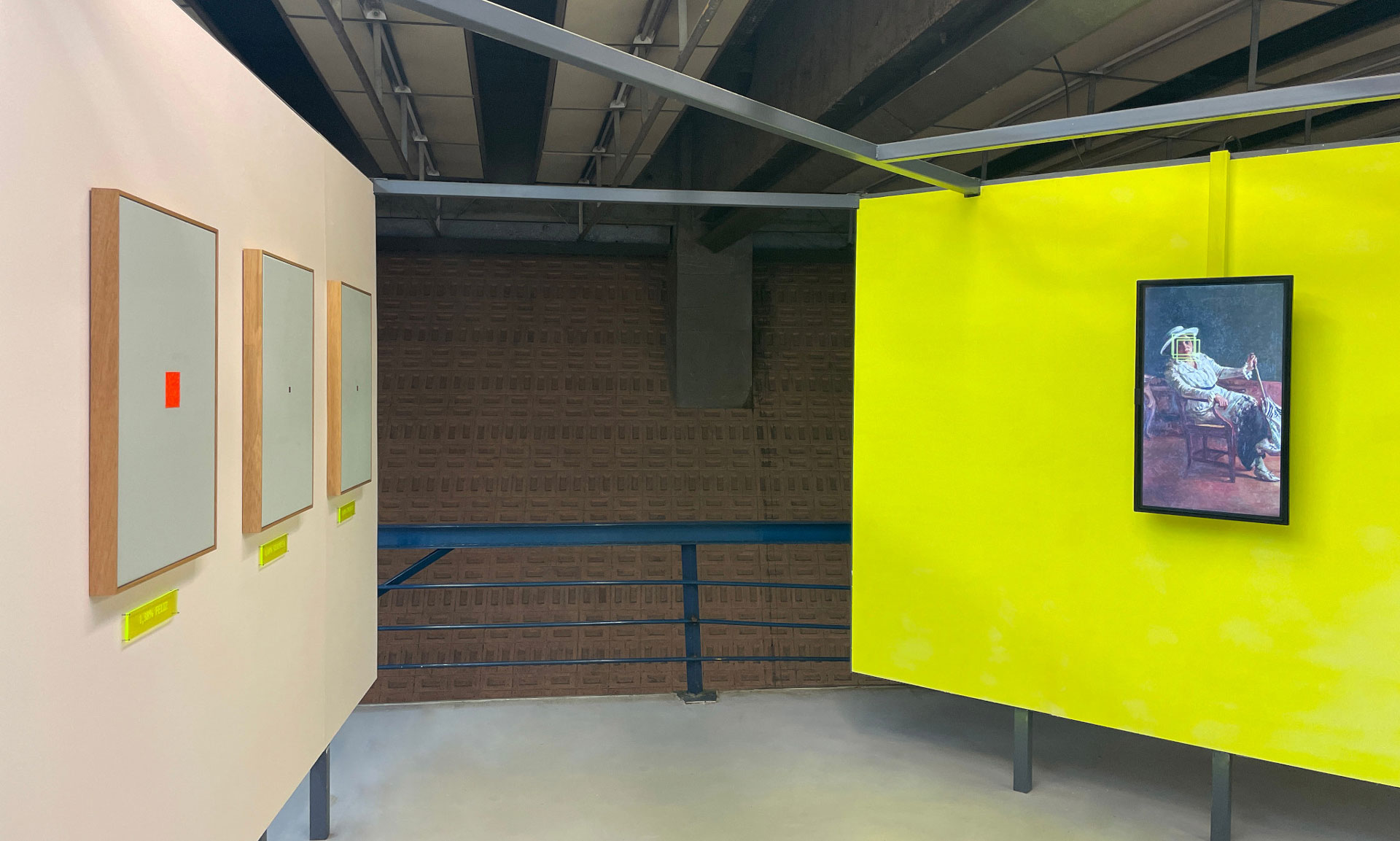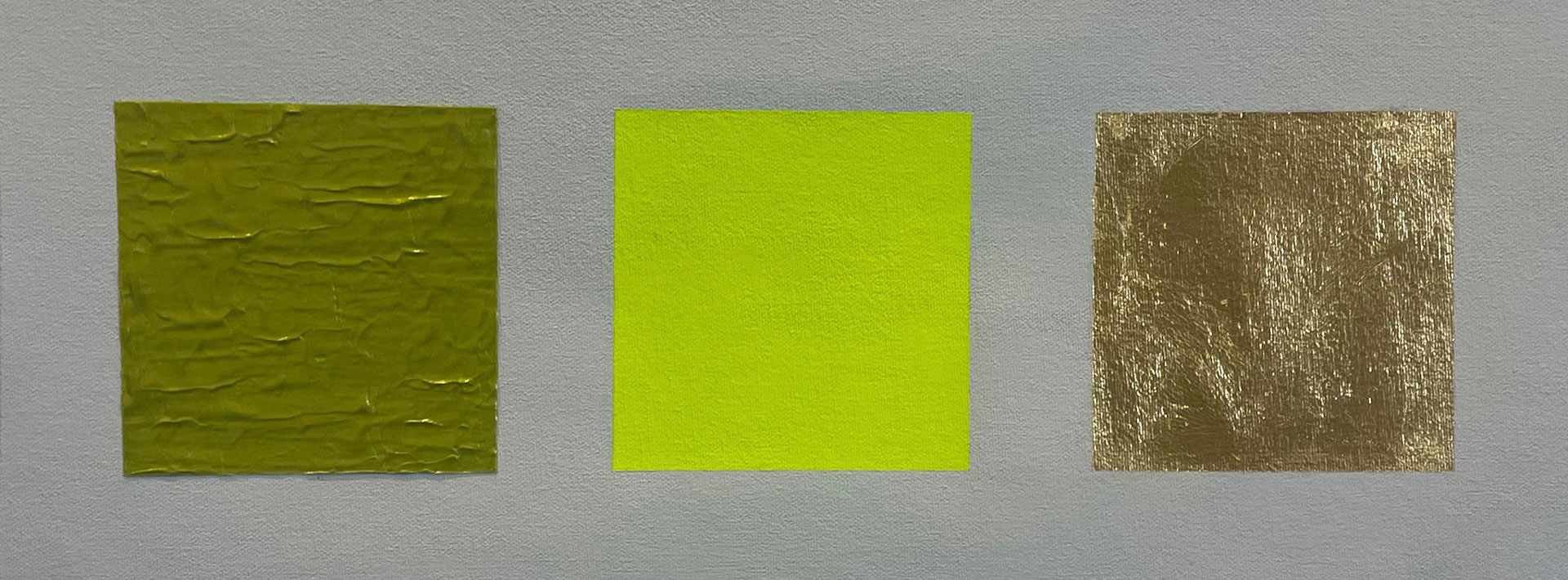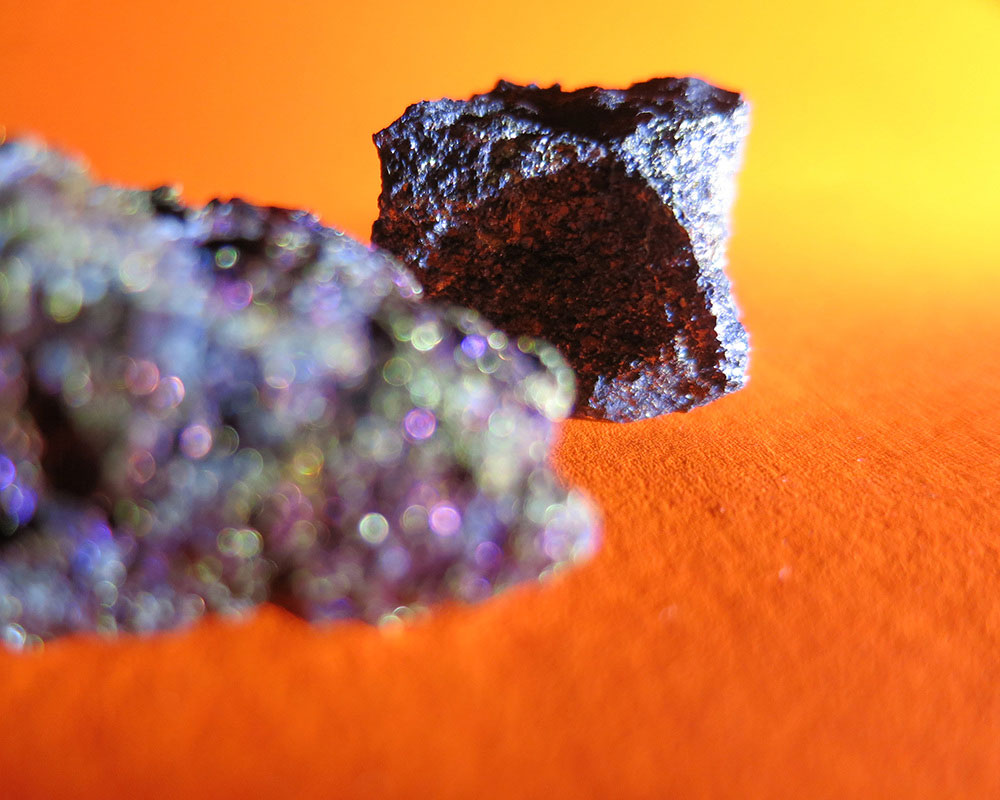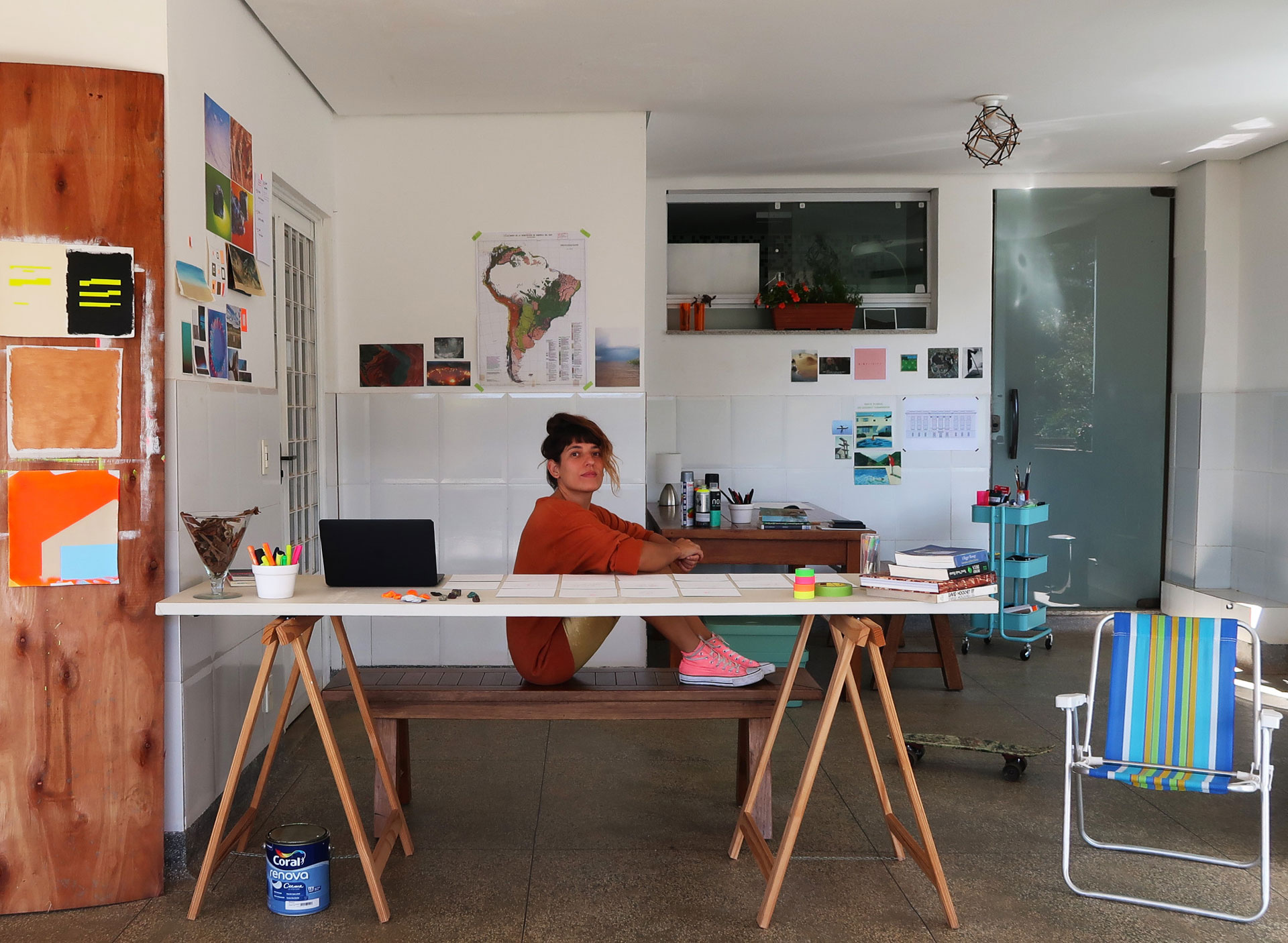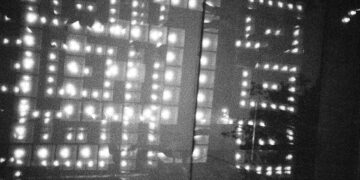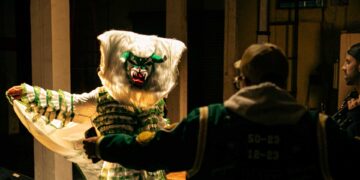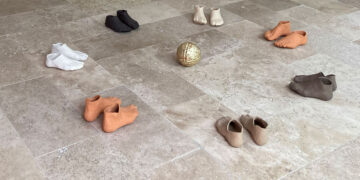Before she begins showing me the cosmos of her artistic production, meticulously arranged in one of the rooms, it’s clear that her practice is rooted in a solid and coherent conceptual territory, establishing a continuous dialogue between materiality, technology, and nature. Each piece unfolds as a chapter in an ongoing investigation.
Mari Nagem is a multidisciplinary artist whose work explores environmental transformations through technology, emotional states in the digital era, and the artificiality of landscapes shaped by human intervention. Born in 1984 in Belo Horizonte, Minas Gerais, she earned a degree in Fine Arts from the Federal University of Minas Gerais (UFMG) in 2007 and completed a Master’s in Visual Arts at the Haute École d’Art et Design in Geneva, Switzerland, in 2010. She splits her time between New York and São Paulo, developing projects that span installation, video and design. A finalist for the PIPA Prize, she won first place in the Marcantonio Vilaça Award in 2021, was selected for the Paço das Artes project season in 2022, and in 2023 received an honorable mention at the SFER IK Award, which recognizes artists working at the intersection of art, nature, and technology. This formal yet essential introduction serves as a grounding point before delving into the artist’s work.
Mari Nagem, Nesting, 2024. Ceramics, branch, paint, dried plant, stones, and acrylics. Variable dimensions. Courtesy of the artist.
In truth, Mari Nagem embodies the role of a contemporary flâneur, traversing the hybrid territories of digital culture and the natural landscape. Her observations are translated into visual compositions that constantly negotiate between the real and the artificial, the analog and the digital. The artificial landscapes she captures form a kind of visual mapping of the digitized information age. There is an evident sense of dérive in her artistic practice—a certain rootlessness, a desire to navigate the contemporary world as if feeling her way through the dark, touching landscapes as though they might reveal something about the shifting nature of subjectivity.
Mari Nagem, Curator’s Notes of Thiago Hersan in 111 minutes. Custom software, digital drawings, 3568 x 2008 px. Courtesy of the artist.
Her research is structured around five main axes, systematically presented on her website (www.marinagem.com.br) in the following order: The Forest, The Water, The Sun, The Minerals, and The Machines.
In The Forest, Nagem examines human intervention in natural ecosystems and its consequences. A notable example is Bird Fish (2024), a site-specific installation at Parque Augusta in São Paulo. In this work, she invites viewers to experience a physical displacement via a mechanical platform resembling a fish’s tail.
The piece stems from a trip to the Amazon Rainforest, where, after a major flood, Nagem experienced boats navigating above the treetops. What world lay submerged beneath the surface? In the São Paulo installation, she recreates this vertical movement, offering the public a panoramic view and a new perspective on life within the public space.
Mari Nagem, Bird Fish, 2024. Pantographic platform for public interaction, variable dimensions. Courtesy of the artist.
In Theory of Evolution (2022), exhibited at Paço das Artes, the artist envisions a dystopian future for humanity. The installation consists of a Dracaena trifasciata, a glowing tube, a metal casting sculpture with automotive paint, and soil, arranged in variable dimensions. Nagem suggests that just as plants are vital to life on Earth, artificial lighting has become indispensable. In this speculative scenario, a dead branch and an LED tube symbolize the evolution of plant life in the near future.
Courtesy of the artist.
In the series The Water, Nagem employs various media to explore the impact of technology and climate change on the environment. In Heatwave (2024), presented at Galeria Lume in São Paulo, she transforms a rain stick—a traditional indigenous percussion instrument—into a mechanized ritual within a sound installation. Through this act, she evokes the audience’s memory, highlighting the erosion of our symbolic perception of life and the deteriorating connection between rituals and time.
A decade earlier, in the multimedia installation Heavy Metals, she arranged 140 plastic bags filled with water within an exhibition space during São Paulo’s severe water crisis, which was exacerbated by the contamination of aquatic ecosystems.
The title Heavy Metals carries a double meaning. It refers both to “heavy water,” a chemical term for water enriched with heavy metals—often linked to nuclear processes and radiation—and as a metaphor for water’s increasing environmental and symbolic weight. Through this tension, the artist underscores how an element as vital as water is being rendered toxic by human activity.
Mari Nagem, Heavy Metals, 2014. Multimedia installation with 140 plastic bags, pins and water, variable dimensions. Courtesy of the artist.
The Sun is an ongoing series in which the artist investigates the relationship between bodies, temperature, solar cycles, and our digitized perception of time. Her research delves into the intensity of light, the sensation of heat, and how these elements shape our experience of space and environment.
It is likely that Nagem explores these characteristics to evoke the atmosphere of sweltering days, reflecting on climate change and humanity’s relationship with extreme heat conditions. In her recent exhibition Calorcito at Galeria Lume in São Paulo, Nagem presents Sunset (2024), a work featuring a red-painted wall combined with neon geometric shapes, recreating a sunset and its supposed reflection on water. Within this arid, artificial landscape, there is a sense of recognition—a belonging to a blurred and not-so-distant future.
Mari Nagem, Installation view at Galeria Lume, part of the solo show Calorcito, in São Paulo, Brazil. Courtesy of the artist.
Mari Nagem, Ngram Series, 2024. Acrylic, latex and enamel on canvas, 15.7 × 19.6 inches. Courtesy of the artist.
In The Minerals, the artist explores the materiality and essence of minerals, bringing forth questions about the exploitation of natural resources and our connection to the earth. The works in this series establish a dialogue between algorithms and the artist’s own gestures. Her Ngram Series (2024) consists of paintings that visualize words mapped using Google Ngram Viewer. Words such as rain, heat, and death, which appear faintly in the center of each canvas, gain prominence as they are embedded within a graph spanning from 1920 to 2020, tracing their frequency over time. The algorithm-generated reliefs form landscapes that unfold into their own narratives.
Another work in The Minerals series, In Gold We Trust, consists of 25 drawings inspired by Brazil’s gold rush. Here, Nagem critically reflects on the exploitation of gold and its symbolic, historical, and economic repercussions. The title plays on the phrase “In God We Trust,” found on U.S. dollar bills, turning it into a pointed parody that questions faith in financial and economic values.
This series was created during an artist residency overlooking the Serra de Itabirito in Minas Gerais—a region historically shaped by the gold cycle. By drawing parallels between the colonial past, the present, and the future, the work underscores humanity’s relentless pursuit of wealth and power.
Mari Nagem, In Gold We Trust, 2018. Ink on paper. 59 x 90 inches. Courtesy of the artist.
We conclude this journey with The Machines, the segment of Nagem’s research where she explores the role of machines in shaping contemporary reality. Through technological devices that not only alter daily life but also manipulate our perception of the world, the artist dissects the intricate relationship between humans and digital systems.
Visually, The Machines incorporates elements such as electronic circuits, digital interfaces, kinetic mechanisms, and artificial lights, creating compositions that blend the aesthetics of the digital with the raw materiality of industry. By positioning machines as protagonists in her visual poetics, Mari Nagem invites the viewer to reflect on the impact of these technologies on subjectivity, collective memory, and the very notion of reality.
Mari Nagem, Actions to Relate to Oneself, 2017. Inkjet on paper, 23 × 16.5 inches each. Courtesy of the artist.
Verb List Compilation: Actions to Relate to Oneself / 1967-1968 – Richard Serra.
In Cordiais (https://cordiais.marinagem.com/), a 2021–23 project created in collaboration with artist Thiago Hersan, which won the Marcantonio Vilaça Award. Operating at the intersection of art, technology, and critical data visualization, the work transforms historical representations of Brazilian women into abstract compositions generated by facial recognition algorithms. By applying AI-based emotion detection to painted subjects, the project exposes the latent biases embedded within both historical portraiture and contemporary surveillance systems.
The transformation of quantitative emotional data into color-block abstractions not only creates a distinct visual language but also challenges the supposed authority and objectivity of algorithmic interpretation. In this sense, Nagem questions the artificiality of experience when mediated by digital systems and algorithms, addressing how these machines filter, encode, and reconstruct the information we consume.
Within this conceptual mapping, the categories Nagem establishes can be understood as a strategy for (re)coding the world. In The Codified World, Vilém Flusser argues that contemporary reality is increasingly mediated by systems of signs and categories that shape our perception. He states: “Humans must understand each other through codes, as they have lost direct contact with the meaning of symbols. Man is an alienated being, forced to create symbols and arrange them into codes in order to bridge the abyss that now exists between him and the world.” (p.130)
Mari Nagem, Linda & Divani, 2023. Animated gift part of Cordiais series. Courtesy of the artist.
Mari Nagem, Linda & Divani, 2023. Exhibition view at Centro Cultural São Paulo, Brazil. In this installation, all the basic emotions (happiness, surprise, sadness, disgust, anger and fear) for the painting Linda Divani are quantified, with a lexicon of colors and materials for each of the emotions. The percentage of each emotion is engraved in acrylic and the painting is displayed on a monitor. Courtesy of the artist.
To complement Flusser’s theoretical framework, South Korean philosopher Byung-Chul Han, whom Nagem frequently references in her research, argues that the world is devoid of the symbolic because data and information do not constitute symbolic meaning. Time slips through our fingers, becoming volatile and uninhabitable. Rituals, he suggests, serve to structure time in the way that a house provides structure to space—what he calls encasement.
Nagem resists this symbolic void by appropriating its very cause: data and information. Through this dual operation, she activates colors, lights, and sounds, developing a grammar that neutralizes emptiness precisely by diving into it—by exposing it.
If we close our eyes, what do we see? Forests with neon plants, a geometric sunset, algorithms drawing mountains, and graphs performing emotions. If artists anticipate life, bringing glimpses of a future approaching us, Mari Nagem (re)codes the world so that we may open our eyes with clearer lenses. An invitation to see what we often choose not to.
Mari Nagem, Studies for happiness, 2021 (part of Cordiais series). Acrylic paint, latex and golden leaf. Courtesy of the artist.
Flávia Dalla Bernardina is an Intellectual Property Lawyer with a postgraduate degree in Art and Culture from Universidade Cândido Mendes (IUPERJ) and a Master’s in Visual Arts from the Graduate Program in Visual Arts at Universidade Federal do Espírito Santo (PPGA/UFES). Bernardina is a Senior Researcher at the Study Group on Copyright and Public Interest at Universidade Federal do Paraná (GEDAI/UFPR), Chair of the Cultural Rights and Intellectual Property Commission of OAB/ES, and a member of the Special Intellectual Property Commission of OAB Nacional.
As Artistic Director at Matias Brotas gallery, Flávia oversees exhibitions, coordinates participation in art fairs, and leads projects such as the Collector’s Club. As an independent curator, she has worked on projects including the 40-year career book of artist Fernando Augusto, the co-curation of his exhibition The Persistence of Landscape, and the curation of Impermanent Routes, an exhibition by artist Marta Monteiro at Cidade das Artes.
Flávia is the creator of the podcast Conversa com Artista and was an invited curator at RU – Residency Unlimited in August 2024. Additionally, she coordinates and writes for the Arte + column in the Folha Vitória newspaper.
To know more about Flávia Dalla Bernardina: @flaviadalla // linktr.ee/flaviadalla
Mari Nagem, Tectonics, 2015. Inkjet print on cotton paper. 23 x 30 inches. Courtesy of the artist.
Mari Nagem (1984, Brazil) investigates the transformations of the environment through technology, the emotional states in the digital era and explores the artificiality of landscapes from human interventions. Exploring bold colors, sharpened edges, and meticulously selecting titles, Nagem proposes existential (and virtual) questions with a certain irreverence.
SELECTED SOLO AND DUO EXHIBITIONS
2024 Calorcito – Galeria Lume (São Paulo, BR)
2022 A Floresta – Paço das Artes – (São Paulo, BR)
2018 Routine + Happiness – Somos Arts House (Berlin, DE)
SELECTED EXHIBITIONS
2025 Postcards From The Edge – Berry Campbell Gallery (New York, US)
2024 NÓS – Arte e Ciência por Mulheres – FUTUROS (Rio de Janeiro, BR)
2024 SVA Summer Showcase – Flatiron Project Space (New York, US)
2024 BirdFish, public piece at 12 Mostra 3M de Arte – Parque Augusta (São Paulo, BR)
2024 Art in Nature – Sferik Museion (Tulum, MX)
2024 In/Between – New York Live Arts (New York, US)
2023 Oh, I Love Brazilian Women – Centro Cultural São Paulo and MAC Niterói (Rio de Janeiro, BR)
2022 Condições de Existência – Bienal de Arte Digital, Oi Futuro Flamengo (Rio de Janeiro, BR)
2022 On the Elasticity of Resilience – Panke Gallery and Savvy Contemporary – (Berlin, DE)
2022 Museum Without Walls – Queen’s University (Ontário, CA)
2022 State of Affairs – Bica + Guava Platform (BR)
2022 We are here – Sesc Pinheiros – (São Paulo, BR)
2021 Mineral Garden – Museum of Mines and Metals (Belo Horizonte, BR)
2021 Ocupação WR#2 – Bica Platform (Vitória, BR)
2021 The State of Things at Bienal Sur – Museum of Contemporary Art of Rosario (Rosário, AR)
2021 Digital Jokes at Digitale Dusseldorf – Weltkunstzimmer (Düsseldorf, DE)
2021 Optic Shuffle, Renaissance Protocol – Theater Lab (New York, US)
2021 Crash – Prisma (BR) – artist | curator (BR)
2021 Fogo-Fátuo – Prisma (BR)
2021 Em Redes – Artsoul (São Paulo, BR)
2021 Confirm Humanity – Homeostasis.lab (São Paulo, BR) – artist | curator
2020 Últimos Dias – Espaço Fonte (São Paulo, BR)
GRANTS, ART RESIDENCIES, FELLOWSHIPS
2025 Artist in Residency – Rondo (México City, MX) – Upcoming
2024 Nominated for CIFO – Ars Eletronica | Cisneros Fontanals Art Foundation (Linz, AT)
2024 SFER IK Museion Special Recognition Award: Art in Nature – Artist-in-residency and artwork production at SFER IK Museion (Tulum, MX)
2024 Nominated for the Pipa Prize – The Window into Brazilian Contemporary Art (BR)
2024 Celia & Wally Gilbert Artist-in-Residency fellowship at Center for Humanities & History of Modern Biology, at Cold Spring Harbor Laboratory (NY, US)
2024 NYFA Immigrant Artist Mentoring Program (NY, US)
2022 Ox-Bow Conversation in Practice Program Fellowship (US)
2022 – 2021 First prize at Marcantonio Vilaça award – Funarte (Rio de Janeiro, BR)
2021 Artist-in-residence at the Museum of Mines and Metals (Belo Horizonte, BR)
2021 Artist-in-residence at BICA Residency #2 (BR)
2019 Chicas Poderosas New Ventures Lab fellowship (PT – BR)
2018 Artist-in-residence at SomoS Arts House (Berlin, DE)
To know more about Mari Nagem: @mari_nagem
Mari Nagem in her studio, São Paulo, 2024. Courtesy of the artist.
Hero Image: Mari Nagem, Cordiais, 2021. Interactive website, archival images, data-paintings, facial emotion recognition technology and custom software, variable dimensions. Courtesy of the artist.

